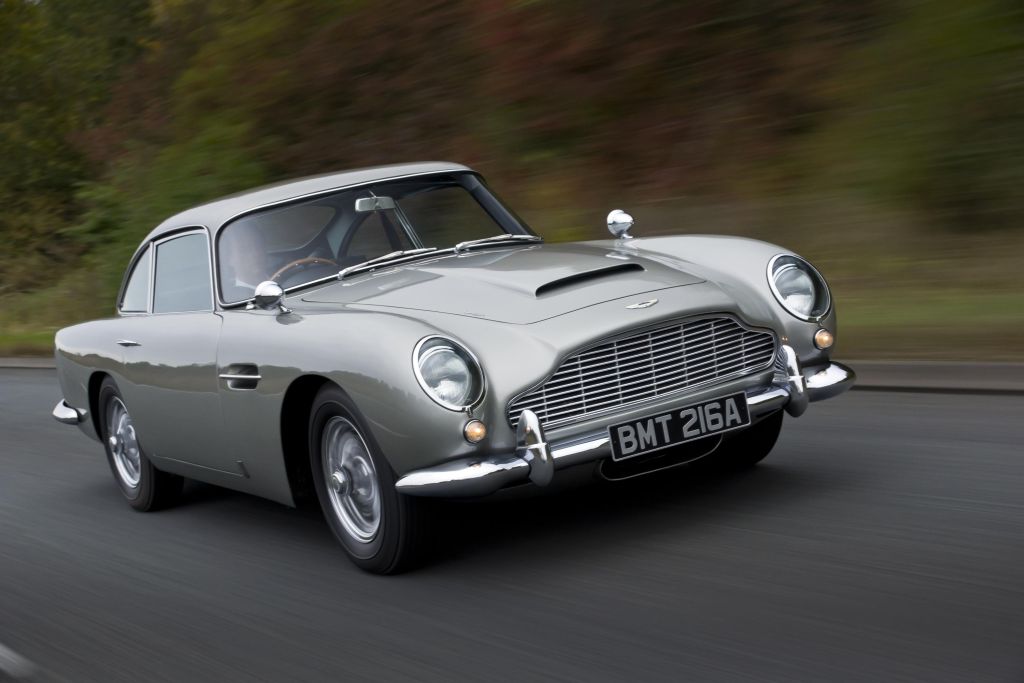James Bond Aston Martin DB5
The Aston Martin DB5 was first manufactured in 1963 and was superseded by the DB6 in 1965. In this short time, 886 were produced in standard form, or, as convertibles and the famous Vantage with specifications that gave this limited model run of only 65 an additional 33 horsepower over the standard engines 282HP.
There was also a ‘Shooting Brake’ model produced of which only twelve were made by converting the standard coupe model into a highly attractive two door type station wagon by coachbuilders, Radford.
Standard equipment was thick pile Wilton carpet, electric windows, alloy bodyshell, a two plus two seating configuration, leather interior plus a four speed manual transmission with overdrive, or optional three speed automatic transmission. Later in its production cycle the DB5’s four speed transmission was dropped and replaced with a five speed transmission. All DB5’s were handmade. The alloy bodyshells were beaten our by hand by craftsmen. The engines were all assembled by one man and the leather interior was handcut and stitched together. Having the body handmade, had its drawbacks when they were involved in an accident. Aston Martin would supply, for example a new fender or bonnet, but they would never fit off the shelf and have to be specially tailor fitted by hopefully a specialist body repairer. Many owners didn’t have specialist repairers available, hence poor body repairs were undertaken. With the engine being hand assembled a unique part of this was that the assembler placed his signature at the top of the motor.
Performance for the Aston Martin DB5 was of course impressive, with a top speed of 143mph and an acceleration time of zero to 60mph in 7.5 seconds. Not fast by today’s standards but very fast in 1963.
The standard car sold for the equivalent of $12,500 in its production years, three times the price of a well spec’d Mustang or Camaro. These days the same DB5 sells for around $600,000 to $750,000.
But of course what turned a lot of attention to the Aston Martin DB5 was that in 1964 one was used in the Ian Fleming 007 film, Goldfinger, starring Sean Connery. Painted in silver birch it came with all sorts of special effects such as the famous passenger side ejector seat, plus, a rear mounted bullet proof screen that rose up behind the rear window by the push of a button. A smoke dispenser, to lay a smoke screen, number plates that rotated to show either British, French or Swiss registrations, twin machine guns that appear from the front side lights, extendable wheel spinners to slash opposing tyres and extendable overriders.
